How to stay fit as you age: Cycling into your 40s, 50s and beyond
A decline in your performance ceiling is natural as you age, but it doesn't mean you have to slow down - here's how you can adapt your training and approach to keep on getting faster


In the past, it was generally accepted that we decline physically from about the age of 40. To some extent this still holds true: the oldest Tour de France winner in history was Firmin Lambot at 36 – and that was back in 1922.
But these days, over-40s are performing at incredibly high levels across a wide range of sports – including cycling. Scientists, coaches and many riders have come to understand that slowing down past 40 isn’t inevitable, provided your training specifically targets those age-related limiters of performance.
We’ll take you through the sessions, tips and advice to keep you firing on all cylinders through this next chapter of your cycling life. After those, we meet the riders aged from 41 to 70 who, despite being theoretically well past their best, just keep getting faster and find out all about their tricks...
How to adapt your training as you get older
Train your V02 max
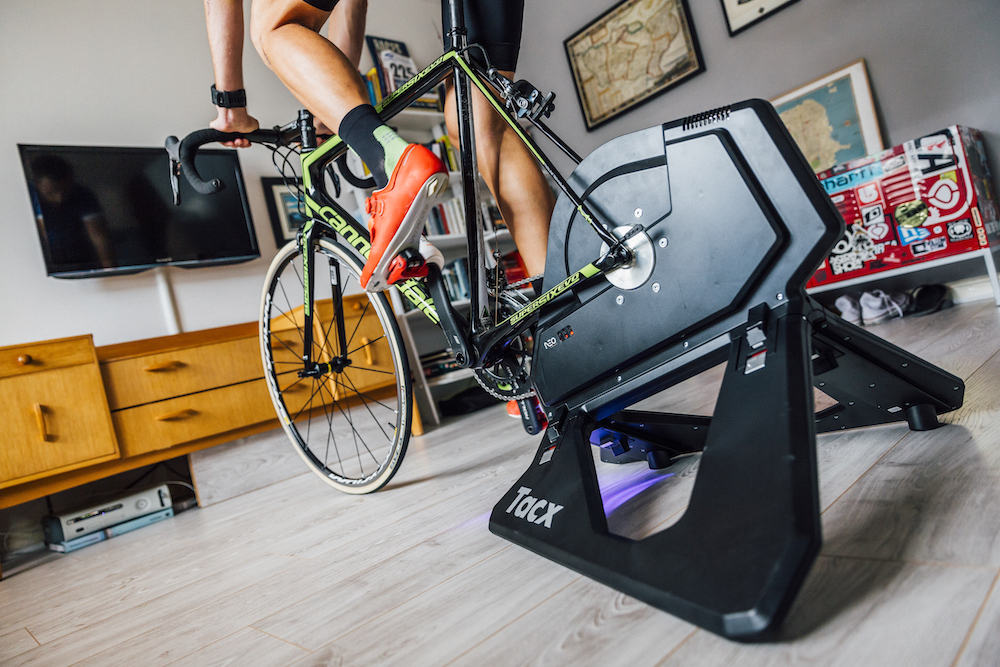
Example sessions
When specifically targeting your VO2 max, intervals are usually three to five minutes, with equal recovery - often amounting to around 20 minutes in total.
Alternatively, you could do a '30 on / 30 off' session, spending 30 seconds pushing a VO2 max effort and following this with 30 seconds spent recovering. Repeat 6 to 10 times to make one 'block' and give yourself four minutes recovery between blocks. A session should consist of a total of between two and four blocks.
"There's good and fairly recent research to say that polarised training is particularly good for older athletes, partly because their VO2 max is declining," explains former commonwealth games medallist and coach, Julia Shaw. "[Older athletes] need to really focus on keeping that as high as possible and polarised training means the hard days can be exaggerated.”
VO2 max is the training zone that's 110-120 per cent of Functional Threshold Power. Put another way: VO2 max refers to the level of intensity you'd be able to sustain for an eight minute full gas effort.
But there is a counterside to this: "I still think there’s a place for sweet spot [84–97% of FTP] as well some threshold sessions [91–105% of FTP] alongside VO2 max sessions," adds Shaw. "The balance between these three would shift depending on ones target race distance and time of year, with the total amounting to around 10 per cent."
Prioritise recovery
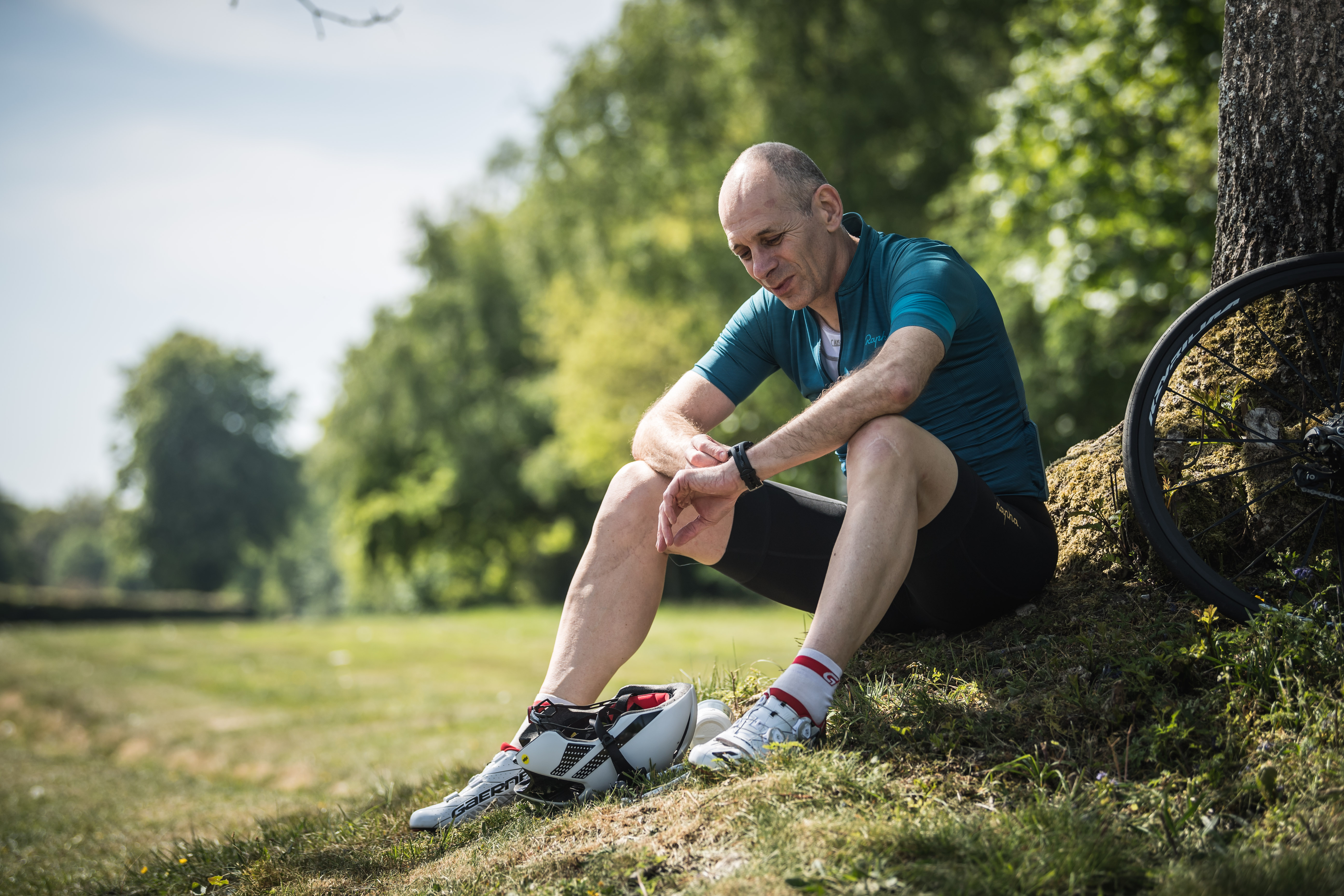
As you age, your body needs longer to recover. To cater for this, Shaw recommends adjusting the traditional ‘three week build, one week recovery’ pattern that is so widely used.
The latest race content, interviews, features, reviews and expert buying guides, direct to your inbox!
“Older athletes should put more emphasis on recovery, with definite rest days. I often change the training periodisation pattern to a two week build with one week easier, to help with recovery and management of training load. Or in some cases if possible, a 10 day cycle instead of a seven day cycle,” she says.
"Being very careful with your easy rides super important,” says Shaw. If you live in a hilly area, you might find it beneficial to do these sessions on the turbo, so as to guard against inadvertently upping the intensity on the inclines.
Remember, complete rest days without any riding are much better for your recovery – and therefore your improvement – than a pseudo-rest day where you've still gone moderately hard. If in doubt, better to take the full day off.
“You also start to lose elasticity in soft tissues, so things like stretching, pilates and yoga, or using the foam roller, are good to incorporate if you can,” Shaw adds.
Get in the gym
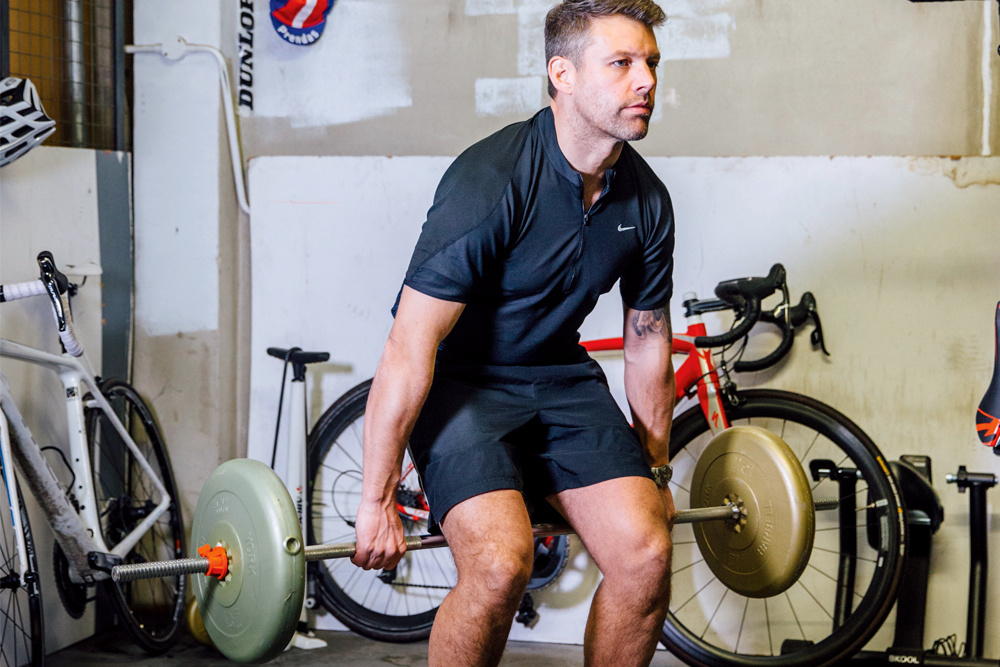
“It's important to prioritise strength training more and it seems like less reps, heavy weights are a good way to do it. Heavy weights are better from a hormone production point of view and also for bone health, which is another big factor worth bearing in mind,” says Shaw.
“Ideally, try and incorporate it all year round, anything from one to three sessions a week. If you can’t find the time to get to the gym, things like strength training on the bike with big gear specific intervals can help maintain muscle.”
Manipulate nutrition

People talk about ‘middle aged spread’, and metabolism does slow down as you age, but weight gain is still a product of an energy surplus. To avoid it, you need to avoid taking in more calories than you burn.
Periodised nutrition, the idea of talking on more carbs ahead of high intensity sessions where you’ll burn through them, and less on low intensity recovery days, is a popular approach amongst experts.
“I think if you're older you can take on board some of those lessons – have phases of low carb and high carb in line with your training, so you can hopefully maintain your muscle mass and not put on the fat that you're fighting against when you're older.”
“Make sure you get enough protein, 1.5-2g/kg of body weight, spaced out through the day. And reduce your carbohydrates, particularly on days where the training is lighter or rest days.”
Choose your goals
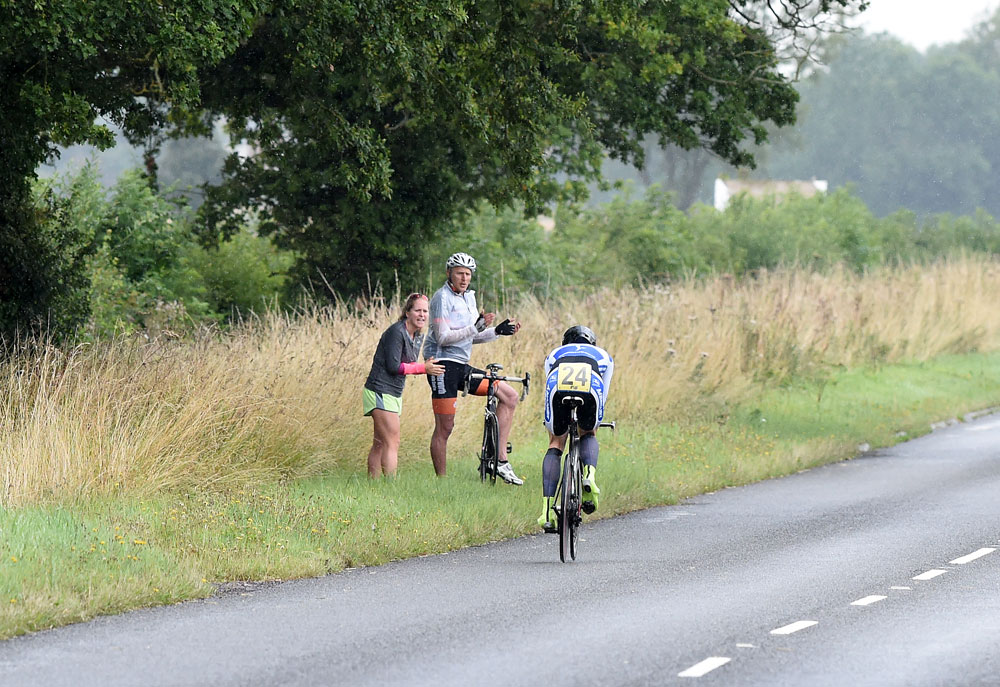
Sprinting and high power prowess declines quicker than endurance capability. Therefore, if you want to be competitive against all ages, it’s likely that longer and more steady state disciplines will suit you more as you age.
“If you were trying to do the very best you could do against all ages it would make sense to go up the distances, as you can make the most of things that aren’t declining as quickly, such as economy,” Shaw says.
However, it depends what you’re getting out of riding – with many age group and masters events available, there’s no reason you can’t enjoy competing against your peers.
The training secrets of the super-veterans
Age group 40-49
Gemma Sargent, 41, Saint Piran
– ‘Eat well and maintain your body’
After her road race debut in 2015, Gemma Sargent quickly became a top performer. She lives in Chorley, Lancashire, and by 2016 was riding UK national races including the Tour Series, and with Team On-Form in 2017 and 2018 she rode UCI international races including the Tour de Yorkshire.
Sargent’s first year competing as an over-40 rider should have been 2020, impeded by Covid restrictions, so her top Masters achievement came this year, a second place in the National Championship road race. She’s also had several top-10 placings in British elite races. All of this achieved despite having had a severe eating disorder earlier in life.
“I suffered from anorexia from a very young age, and it took me a long time to control it,” says Sargent. “However, I started working with [nutritionist] David Starr at the end of 2019 and I’ve not looked back. His tips and advice are invaluable and help me fuel properly for my training and racing.”
With good nutrition supporting her, the 41-year-old is able to do more training than ever. “As long as I eat and rest well, training is not an issue. I work full-time in customer services for Merlin Cycles, so sometimes it can be hard to get the rest I need, but you have to be super-organised.
“I think it takes me longer to recover, but you just have to listen to your body. I have regular sports massage with GD Sport Massage and Rehabilitation, and that helps to keep these old legs going,” she jokes. By balancing cycling training with work, supported by good nutrition and a body maintenance routine, Sargent believes she is keeping the years at bay. “Core work, stretching and yoga are very important to me,” she adds, “and during the winter I do strength work in the gym.” Feeling fitter now than she’s ever been, the elite veteran is looking forward to further improvement in 2022.
How to hold back the years: “Eat well, sleep well, rest when your body tells you to, and remember everybody is different – what works for one might not work for all. Above all, be sure to enjoy it. That’s essential.”
William Bjergfelt, 43, SwiftCarbon Pro Cycling
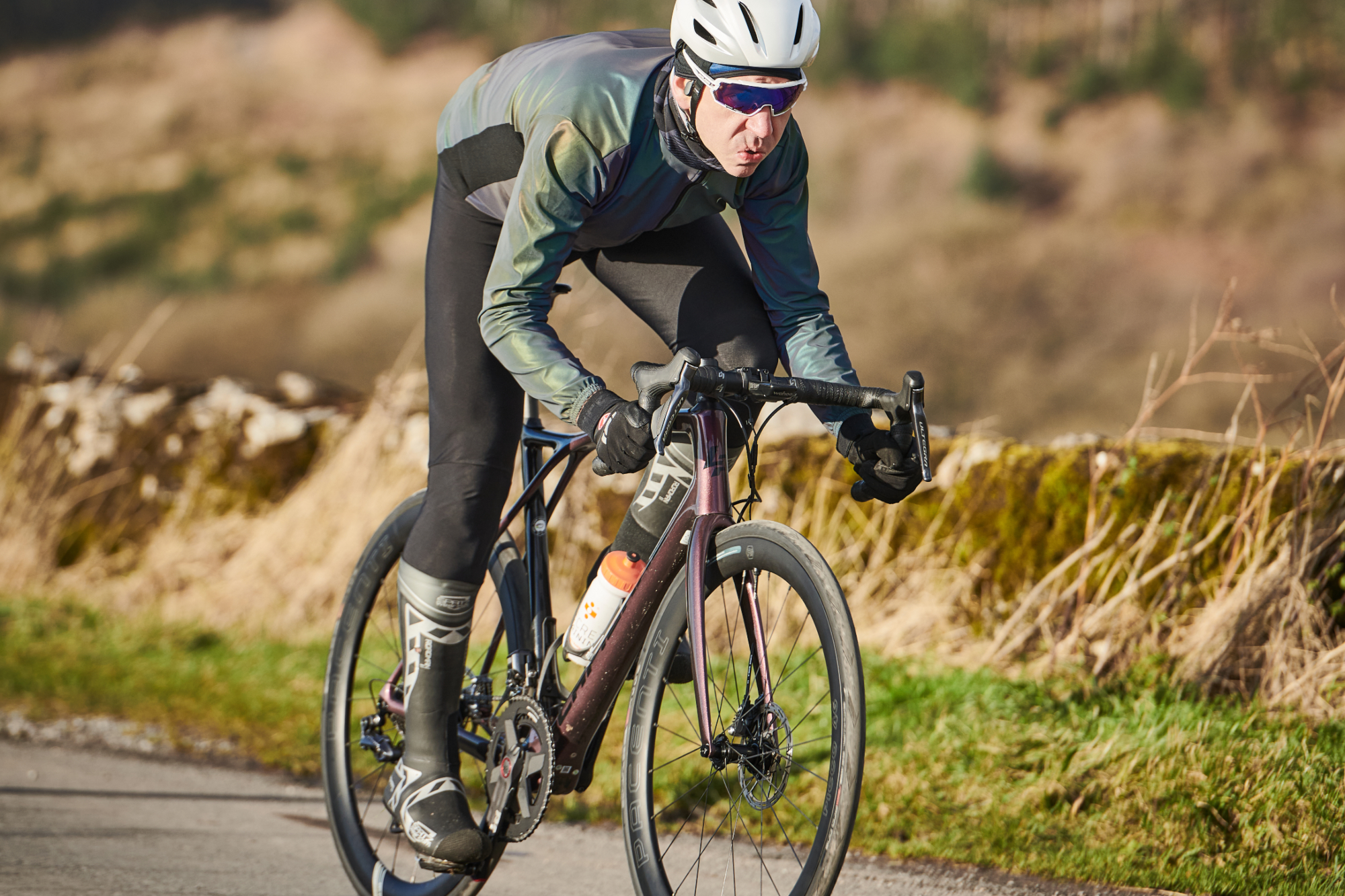
– ‘Make the most of what you have’
Having started out as a mountain biker who did some road racing, in 2008 Will Bjergfelt decided to focus on the road, racing for a number of elite teams, including Sports Beans-Wilier, with good results, including fifth place in the 2013 Rutland-Melton International CiCLE Classic. However, in 2015 he was hit head-on by a vehicle while riding, and suffered a brain bleed and 25 fractures to his right leg – life-changing injuries.
After returning to the sport the following year, Bjergfelt competed as a para-cyclist, while continuing to race in elite able-bodied races. The Bristolian even rode the Tour of Britain [in 2021], aged 42, alongside the likes of Mark Cavendish and Julien Alaphilippe – making him the second-oldest competitor in the race’s history, after Malcolm Elliott. Incredibly, Bjergfelt squeezes in training around a very serious full-time job as a project planner with a large aerospace company.
Since passing 40, Bjergfelt’s best performances have been at elite international level, as well as a para-cycling silver medal in the scratch race at the 2019 UCI Para-cycling Track World Championships. A broken leg in April this year ruled him out of the Tokyo Paralympics, but he is determined to make amends in 2024.
“It’s difficult to say what difference passing 40 has made to me, because I’ve had to cope with the differences my injuries made,” says Bergfelt. “I’ve permanently lost a lot of explosive power.” To combat this loss, he works extra hard on his explosive training, as well as other areas. “I work a lot on endurance now, pushing up my functional threshold, and I do a lot more specific work, rather than wrapping up my training with commuting,” he says.
Focusing on making up for the elements of performance he has lost, Bjergfelt sets an excellent example for all older cyclists. Optimising your cycling ability as you grow older means dealing with the reality you have, not the one you’d like.
How to hold back the years: “Time management is important. I use Training Peaks software, planning a couple of weeks at a time. If you want to ride at as high a level as possible, you need to know exactly what you are doing in training each day.”
Age group 50-59
Janet Birkmyre, 55, Torq Performance
Coach's view: The science of ageing
Jacob Tipper is an elite cyclist and a performance coach (jtperformancecoaching.com) with a master’s degree in applied sports science. He has coached a number of high-performing over-40s riders
“Changes in physiological, neurological and hormonal processes can lead to a slow-down as we age,” says Tipper. “We need to treat these elements as ‘limiters’ that are stopping a rider going faster, and work to improve or remove them.
“A potential big limiter for older cyclists is reduced production of testosterone and human growth hormone (HGH), which can affect muscular strength and slow down recovery. The way to address that limiter is strength-and-conditioning work with heavy loads and low repetitions. That’s how more muscle fibres are recruited per lift, and keeping the repetitions low means less muscle damage, so muscles get stronger without increasing in size or weight. That kind of lifting also boosts testosterone and HGH production.”
Tipper’s advice is a great practical example of combating ageing through specific training.
– ‘Make it fun’
Janet Birkmyre, from Worcester, is a Masters cycling legend with 38 world, 28 European and 61 Masters national titles to her name. She has also won three elite national track titles at the ages of 42, 46 and 49. “The elite titles are the ones that mean most to me,” she says. Birkmyre is a phenomenon, but it’s not by chance. She follows a detailed personalised training plan provided by her coach, Masters world champion and former international rider Steve Cronshaw, who holds a master’s degree in sports nutrition and strength-and- conditioning.
“I train six days a week,” Birkmyre explains, “with one day of complete rest. My training varies throughout the year, starting with long, slow Zone 2 miles and weights for a balanced body and to increase my work capacity, then it becomes more intense as I approach specific events. Each year I work towards two or maybe three peaks, usually for the Nationals in July and the World Masters Track Championships in October.”
Birkmyre puts a lot of emphasis on work she does off the bike, which she says has become increasingly important as she has grown older, though she adds a note of caution. “There needs to be total focus on getting form and technique right when lifting. I am lifting heavier than before – but doing so in a way that is safe. This has helped me to overcome back pain that had been a problem throughout my life. As a result, I’m more comfortable on longer rides and able to push bigger gears on the track, which is important because I can’t pedal as fast as I could, so I just use bigger gears.”
A common thread among older riders is taking longer to recover. Her coach Cronshaw introduced technology to help with this. “We look at my heart rate variability, measured via the Ithlete app every day. It allows us to track my recovery in a scientific way, as well as recording some softer measures around muscle soreness, fatigue, stress and sleep,” adds Birkmyre.
How to hold back the years: “Make it fun. I love my team-mates, time with them racing or training is joyous. Have a great support network. My incredible husband David plays a huge part in keeping me competitive. Make health the number-one goal.”
Richard Oakes, 53, Team Ohten Aveas

– ‘We want to find out how fast a 53-year-old can go’
Lifelong cyclist Richard Oakes, from Stamford in Lincolnshire, was a good time triallist in his 20s and 30s – but he’s much faster now, in his 50s. “I did low-21-minute 10-mile time trials when I was younger, and my personal best this year is 18.08 while winning an open event by 30 seconds. For 25 miles, I could do 55 minutes in my 20s; now my PB is 47. 52,” he says.
Oakes has won several National Masters Championship titles, and is Masters world champion in the team pursuit. Even so, he reckons he can go faster yet and win more. “It’s what I’m working on with my coach Jacob Tipper,” he says. “We want to find out how fast a 53-year-old man can go. We thought 50 [years old] would be the pinnacle of my performance graph, but now we reckon I’ve got more headroom. We think a 17-minute ‘10’ and a 46-minute ‘25’ are possible. I’m also aiming for 2.10 for the 2,000-metre individual pursuit.
How has Oakes reached such an incredible level of performance? “My training has really changed. Jacob Tipper coaches Dan Bigham too, and I just do everything Dan does. We look at racing as a triangle. The three sides are: on-the-bike training; strength and conditioning; and technology, with the mind in the middle of the triangle. I work at trying to maximise everything. In terms of mind, I think being older is an advantage.”
It’s an intriguing theory that, psychologically, age may offer advantages. “Jacob says a lot of younger riders he coaches don’t have my mental resilience. As an older rider, you can also be more honest with yourself when you are tired. Plus, you do all the stretching and off-the-bike work, because an older body needs it, whereas younger ones can get away without doing it.”
How to hold back the years: “Invest in yourself. If you want to improve in time trials, you have got to be as aerodynamic as you can. I’m lucky to be involved with Jacob Tipper and Dan Bigham.”
Age group 60-69
Jo Corbett, 66, Sherwood CC

Jo Corbett
Defy your years: How to keep getting faster as you grow older

Recovery: Be aware that recovery takes longer as you get older so listen to your body and take extra measures such as stretching, sleeping and eating well, to speed up the process.
Technology: Take advantage of the many technical advances have been made in training tech, ideally under the guidance of a coach.
Strength and conditioning: This is probably the most important step to counter the effects of ageing. The riders interviewed here do low-rep heavy lifts, paying attention to their form. Seek qualified instruction
Train your strengths: Endurance is the human capacity least affected by age but that doesn’t mean you should neglect it. Keep pushing out those long, aerobic intervals and long, steady rides.
– ‘I’m training as hard as I ever did’
Winner of the 2021 women’s National 25-mile time trial title in this 60-69 age group, Jo Corbett is a force of nature. Small in stature but with the heart of a lioness and the energy of a schoolkid at playtime, she sees no need to rein in her training load.
Corbett, from Farnsfield in Nottingham, trains as hard as ever. “I do get tired,” she concedes – and with her daily training routine it’s no wonder. “I try to do three hours a day, seven days a week, just like I always have. In the morning I do two hours on my mountain bike, then an hour on my turbo in the afternoons. I follow Peter Read’s The Black Book, mapping out what you do every day of the year, starting in November,” she says. Corbett’s work ethic is exemplary and her love for competition shines through.
Compared to her 1980s PBs of 28 minutes for 10 miles and one hour 14 minutes for 25, Corbett was much faster this year – 22.32 and 1:01.32 respectively. Age-group competitors are awarded a reverse handicap in CTT time trials – time they can subtract to give a theoretical comparison with the outright best. Corbett is entitled to subtract 18 minutes for 25 miles, giving her a theoretical PB of 43.32 – only 34 seconds slower than the British men’s competition record.
How to hold back the years: “Have a go! It doesn’t matter what time you do. A lot more women would race, but they are frightened about what time they’ll be able to do. Don’t be.”
Age group 70-79
Brian Cookson, 70, Cycle Sport Pendle
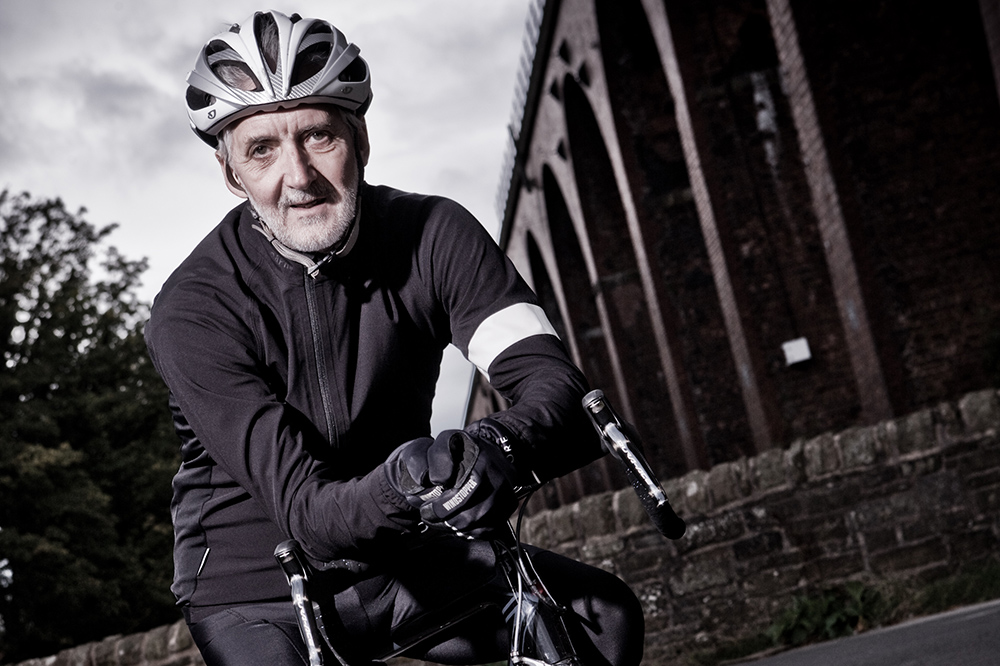
– ‘Remember to enjoy it’
Brian Cookson has had a long and distinguished career inside and outside cycling. As a race organiser and official, he became British Cycling and UCI president – but he’s now relishing life back on the bike. “This is my time,” he says. “Time to enjoy other things, and time to ride my bike.”
Cookson, who lives in Whaley in Lancashire, was a good rider in his teens and 20s, becoming Lakeland area road race champion in 1971. This year he finished second to former pro Geoff Dutton in British Cycling’s over-70s National Championships road race. “I use modern methods now,” says Cookson. “I’ve got a smart trainer and I go on Zwift. I’ve also got a coach, Roy Holmes. I eat a good balanced diet, I warm up and cool down properly, and on my coach’s advice I’m doing a structured strength and conditioning programme this winter. So overall, I’m working around being older. Taking longer to recover is the big thing I’ve noticed, so I just work around that.”
How to hold back the years: “If you feel tired, back off and just enjoy the ride. Don’t be afraid to do what my coach calls ‘an embarrassingly slow ride’.”
This article was originally published in the 30 December 2021 print edition of Cycling Weekly. Subscribe online and get the magazine delivered direct to your door every week.
Michelle Arthurs-Brennan the Editor of Cycling Weekly website. An NCTJ qualified traditional journalist by trade, Michelle began her career working for local newspapers. She's worked within the cycling industry since 2012, and joined the Cycling Weekly team in 2017, having previously been Editor at Total Women's Cycling. Prior to welcoming her first daughter in 2022, Michelle raced on the road, track, and in time trials, and still rides as much as she can - albeit a fair proportion indoors, for now.
Michelle is on maternity leave from April 2025 until spring 2026.
- Chris SidwellsFreelance Journalist & Author
- Anna Marie AbramFitness Features Editor
- David BradfordSenior editor
